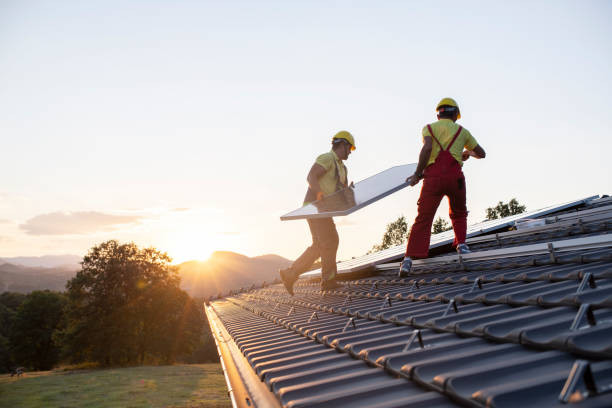Eco-Friendly Building: Why Metal is the Future of Sustainable Construction
Timmonsville, United States - June 10, 2025 / Delta Building Systems /
Sustainable building is no longer just a trend; it's a necessity. As climate change accelerates and environmental concerns grow, more builders and developers are turning to sustainable practices to reduce their ecological footprint. One of the most promising materials in this green revolution is metal. Durable, recyclable, and highly efficient, metal structures are transforming how we think about eco-friendly construction. This guide will walk you through the most effective sustainable building practices for metal structures, specifically tailored for the month of June—when summer projects kick off and energy efficiency becomes a hot topic, quite literally.
Why Metal Structures Are Key to Sustainable Construction
When we talk about sustainable building materials, wood and concrete often steal the spotlight. But metal—especially steel and aluminum—brings its own powerful set of green advantages. First and foremost, metal is incredibly durable. A well-constructed metal building can last for decades with minimal maintenance, reducing the need for repairs and replacements that consume resources.
Even better, metal is 100% recyclable. Unlike some materials that degrade over time or lose integrity after recycling, metal can be reused repeatedly without compromising strength or quality. This closed-loop cycle means less waste in landfills and lower demand for raw materials. According to the Steel Recycling Institute, steel is the most recycled material on the planet, and recycled steel is just as strong and versatile as new steel.
Metal structures also support energy efficiency. They’re excellent at reflecting sunlight, which helps keep interiors cooler during June’s rising temperatures. Combine that with insulation and passive solar design, and you’ve got a structure that drastically reduces the need for artificial cooling. This not only cuts energy costs but also reduces carbon emissions, which is a win-win for both the environment and your wallet.
Green Design Principles for Metal Buildings
Design is the cornerstone of sustainability. Before laying the foundation or assembling panels, it's crucial to integrate eco-friendly principles into the planning phase. For metal structures, orientation matters—a lot. In the Northern Hemisphere, positioning the building to face south maximizes natural daylight, reducing the need for artificial lighting.
Use cool metal roofing systems that are designed to reflect more sunlight and absorb less heat than standard roofing materials. These roofs can lower roof temperatures by up to 50°F and reduce peak cooling demand by 10-15%. During June, when air conditioners are working overtime, this small design choice can make a massive difference in energy efficiency.
Another smart design practice is to incorporate natural ventilation. Use ridge vents, louvered windows, and high ceilings to encourage airflow. This reduces the dependence on HVAC systems and maintains indoor air quality—a crucial factor in sustainable living.
Also, consider the site location. A sustainable metal building shouldn't disturb local ecosystems. Choose previously developed sites when possible and avoid areas that house endangered species or sensitive habitats. Incorporate landscaping that supports biodiversity and requires minimal water—xeriscaping is perfect for this.
Using Recycled and Eco-Friendly Metal Components
The materials you choose can make or break the sustainability of your project. Using recycled metal is a no-brainer. Many manufacturers offer steel products with a high percentage of recycled content. In fact, structural steel made in the U.S. contains an average of 93% recycled steel scrap.
But don't stop there. Look for suppliers that use green manufacturing processes. Some companies use electric arc furnaces powered by renewable energy to melt down recycled steel, drastically cutting down on greenhouse gas emissions.
Fasteners, bolts, and framing accessories should also come from sustainable sources. Choose galvanized coatings that are free of toxic substances. If you're painting metal, opt for low-VOC (volatile organic compounds) paints that are safer for both humans and the planet.
One overlooked strategy is modular construction. Prefabricated metal components reduce on-site waste and construction time. Because everything is cut and shaped in a factory, there's far less material discarded on the job site. This method also reduces energy use, water consumption, and even noise pollution.
Energy Efficiency Strategies for Summer Builds
June is a peak month for construction, but it’s also the time when energy demands skyrocket. Metal structures can mitigate these effects with smart strategies that maximize efficiency. One effective approach is to combine reflective roofing with radiant barriers. This creates a thermal envelope that keeps heat out and comfort in.
Insulation plays a major role too. Use ll such as spray foam or rigid board insulation with a high R-value. Not only does this keep the building cooler in summer, but it also lowers the load on air conditioning units, extending their lifespan and reducing energy costs.
Solar integration is another top-tier strategy. Metal roofs are ideal for solar panel installations. Their durability supports heavy panel loads, and the reflective surface keeps panel temperatures lower, improving their efficiency. In June, when the sun is at its strongest, solar panels can significantly offset the building’s energy consumption.
Don't overlook lighting. Use energy-efficient LED lighting and motion sensors to minimize unnecessary electricity use. Skylights and clerestory windows can bring in natural daylight, further reducing reliance on artificial lighting.
Maintaining Sustainability Post-Construction
Building green is only half the battle; maintaining that sustainability is just as important. Routine maintenance of metal structures helps preserve their energy efficiency and longevity. For instance, cleaning reflective roofs periodically ensures they remain effective at reflecting sunlight.
Implement a regular inspection schedule for HVAC systems, insulation integrity, and water usage systems. Early detection of leaks or inefficiencies can prevent bigger, costlier problems later on. Water conservation is another area worth attention. Install low-flow fixtures and consider harvesting rainwater for irrigation or non-potable uses.
Engage occupants in sustainability efforts. Simple behaviors—like turning off unused lights or setting thermostats appropriately—can compound into substantial energy savings. Provide clear signage and guidelines to encourage eco-conscious habits.
Finally, consider future upgrades. As technology evolves, integrating new sustainable solutions—like smart thermostats, energy storage systems, or more efficient solar panels—can keep your metal building on the cutting edge of green innovation.
FAQs
1. Are metal buildings really more sustainable than wood or concrete?
Yes, metal buildings often surpass wood and concrete in sustainability. They are 100% recyclable, require less maintenance, and support better energy efficiency with features like reflective roofs and insulation options.
2. Can metal structures be used in residential homes, or are they just for commercial use?
Metal structures are becoming increasingly popular in residential construction. With modern design options, they can be both aesthetically pleasing and functionally superior in terms of energy use and durability.
3. How do I make sure my metal building stays cool during hot summer months?
Use cool metal roofing, proper insulation, and ventilation systems. Adding solar panels and high-efficiency windows also helps maintain a comfortable indoor climate.
4. What certifications should I look for in sustainable metal building products?
Look for products with LEED certification, ENERGY STAR ratings, and Environmental Product Declarations (EPDs). These indicate the product meets certain environmental performance standards.
5. Is it expensive to build a sustainable metal structure?
While upfront costs might be slightly higher, the long-term savings on energy bills, maintenance, and potential tax incentives often make sustainable metal buildings more cost-effective over time.

Contact Information:
Delta Building Systems
3116 N Sally Hill Rd
Timmonsville, SC 29161
United States
Keith Hill
(843) 413-1712
https://www.deltabuildingsystemsinc.com
Original Source: https://deltabuildingsystemsinc.com/media-room/#/media-room


